12 ways to prevent facial eczema using your pasture
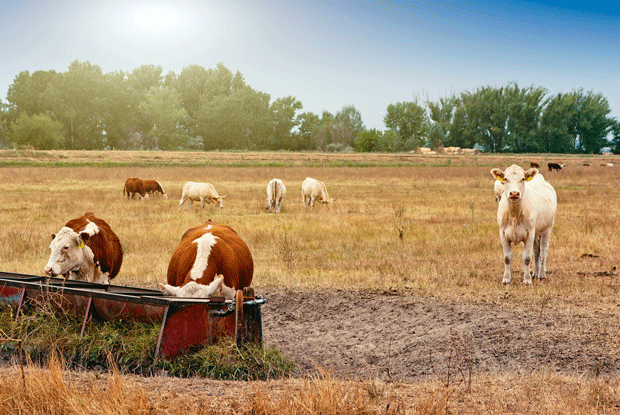
Get a handle on facial eczema this season by following these 12 tips.
Main text source: Beef & Lamb NZ, www.beeflambnz.com, “Facing up to Facial Eczema”
Note to readers: the information in this feature is relevant to all farm livestock, but specific trials mentioned were mainly carried out on sheep as they are the most common livestock on farms and blocks, and are more likely to be affected.
1. IF YOU’RE REPLANTING PASTURE, CHOOSE THESE VARIETIES
Pasture research in NZ has found the FE risk is highest on ryegrass, browntop, cocksfoot, Yorkshire fog, and dogstail grass species because the spores responsible do best in the build-up of litter which sits at ground level up to 5-6cm of the leaf.
Great alternatives that carry very low spore counts include chicory, plantain, tall fescue, and legumes including white and red clovers, Lotus species (Lotus major, birdsfoot trefoil), lucerne, sulla, and sainfoin. These pasture plants have lower levels of litter, and create shade leading to lower soil temperatures and more moist soil.
The mixes that are safest are:
• chicory
• chicory with red and white clovers
• tall fescue with red and white clover
Livestock performance is also superior on these crops and/or pastures compared with ryegrass/browntop based pastures. By using pastures that are ‘safer’, losses caused by FE can be reduced and growth rates can be increased, leading to increases in overall profitability of up to 20%.
Source: AgResearch Grasslands
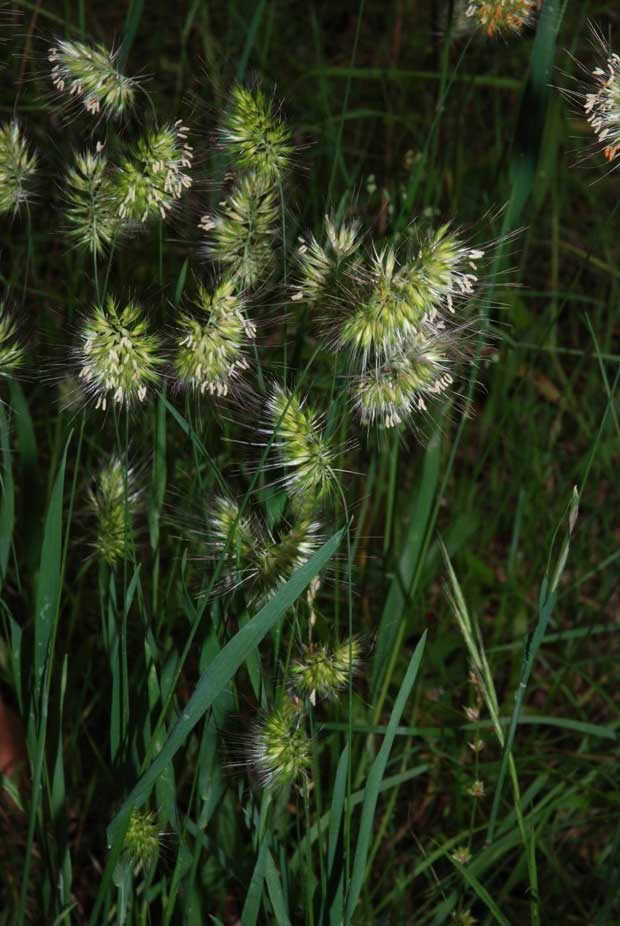
Dogstail
2. TAKE CARE OF YOUR EARTHWORMS
Earthworms eat pasture litter. The more worms you have, the less litter build-up and the fewer spores are found. Research has found there tend to be more worms and activity around legumes than in grasses.
3. ROTATE, DON’T SET STOCK
A fast rotational grazing system is more effective at reducing the risk of animals contracting FE than using the set-stocking system where a paddock is completely grazed out over a number of days. By controlling defoliation on grass- dominant pastures, spore intakes can be restricted because animals are removed before leaves get too short and animals are exposed to the litter below 5-6cm.
4. REDUCE YOUR RELIANCE ON RYEGRASS
Research has shown stock grazing pastures which are free from ryegrass contamination and instead are made up of chicory, red and white clover, and tall fescue have considerably less evidence of liver damage than those feeding on ryegrass pastures. The bonus: growth rates are markedly higher (10-80%).
In one trial 50 lambs grazed either a ryegrass-based pasture or a chicory/red clover/tall fescue pasture for 18 weeks. When they were slaughtered, liver tests showed that 23 of the 46 ryegrass lambs had liver damage. Only one lamb out of 48 feeding on chicory/red clover/tall fescue had liver damage.
Source: AgResearch Grasslands
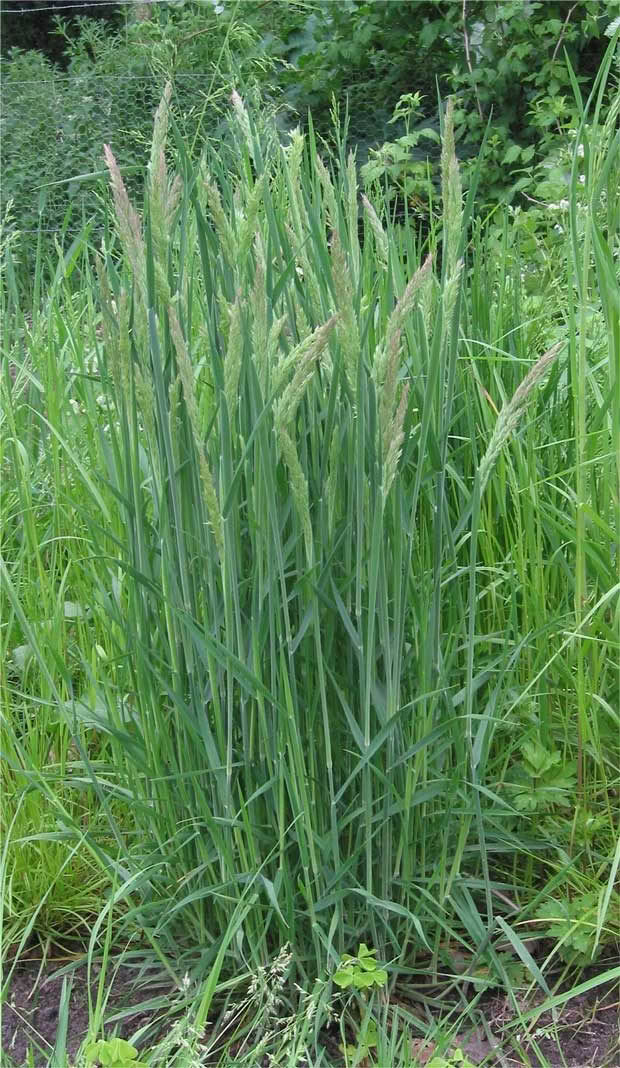
Yorkshire fog
5. IF YOU CAN’T REPLACE IT, OVERSOW IT
Where your existing pastures contain ryegrass, browntop etc, and you are not able to replace it yet, one option is to oversow it in spring with late-flowering red clovers, and encourage development of red clover so it dominates over the summer-autumn period. These areas can then be held in reserve for periods of high FE risk.
6. URINE PATCHES ARE A DANGER SIGN
Dark green urine-patch sites in dry paddocks generally have very high spore loads because there is a high nitrogen content, more dead leaf from urine scald and a denser, more sheltered environment.
Most pasture will become grass-dominant as dry periods develop during summer because stock will graze out clovers and, unless there is adequate soil moisture, these plants won’t regrow.
However, grass will come away quickly where animals have urinated, giving pasture a mosaic look of dark green (urine patch sites) interspersed among straw coloured pasture, and ungrazed dung patch sites. Livestock prefer pasture at urine patch sites in grass-dominant pastures and so end up ingesting high levels of spores.
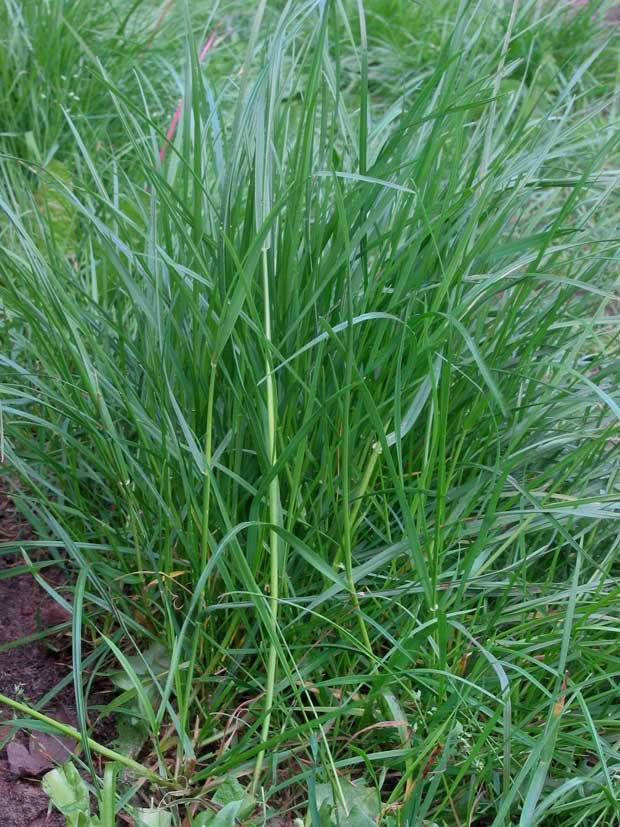
Ryegrass
7. CLOVER GIVES YOU A SPECIAL ADVANTAGE
The presence of clover plants in pasture has a big influence on grazing patterns. It makes less preferred herbage, such as areas where dung has been dropped previously, more acceptable to the animal. This in turn results in less intense grazing of urine patch herbage. There are also beneficial effects on pasture structure and composition, with less litter produced and consequently lower spore loads. As the proportion of clover increases in a pasture there is a consequent decrease in spore loads. Conversely, spore loads increase as the ryegrass content increases.
8. PLAN YOUR GRAZING WELL AHEAD OF TIME
The successful farmer dictates what their stock is consuming, and is not simply reacting to situations that develop. Generally the safest areas are:
• shady, south-facing slopes
• those facing prevailing, drying winds
The first thing is to avoid litter build-up in pasture by keeping them under control in spring. Try to avoid topping pastures, but if you have to, don’t leave the cut grass behind as it guarantees conditions favourable to FE. Make hay or silage, or if you do just top it, use a silerator or silage harvester with a catch trailer to remove all clippings.
9. SOUTH IS BETTER THAN NORTH
Research has shown spore counts on easy rolling paddocks and those that face north can be twice those on the south-facing paddocks. But the lower risk on cooler, drier slopes is only relative. If the spore count on the sunny face is eight times the danger threshold, it will be four times on the shady slopes (and so still dangerous). Fence off safer areas of pasture by species or geography from general pasture, and if possible have sufficient fencing so that you can move sheep, either daily or every second day, on a 10-20 day cycle.
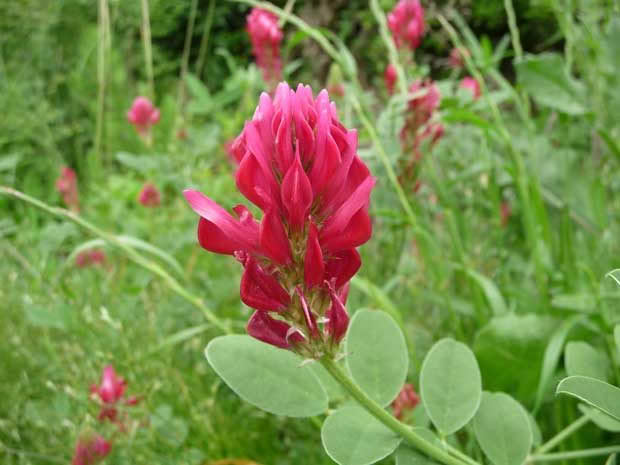
Sulla
10. LIGHTEN YOUR STOCK LOAD (THIS WILL SAVE YOU MONEY TOO)
While light grazing will reduce the spore intake and the risk of FE, the trouble is that you can quickly run out of paddocks to use unless the farm stocking rate has been reduced to match the feed available.
AgResearch trials have shown that keeping lambs until March so they gain extra weight isn’t worth it. It puts extra pressure on the breeding ewes and increases the severity of the FE experienced, causing more ewes to die, and those that survive produce fewer lambs the following spring. The costs far outweigh the added return from the six weeks of extra lamb growth.
11. PLAN YOUR BREEDING SCHEDULE AROUND FE
Farmers in FE-prone areas should be planning for an early, compact lambing so they can wean early and then finish the maximum number at good weights. If you are not able to finish your lambs early, then they should be off the farm by the end of February.
12. GROW A FORAGE CROP
Another option that allows you to reduce the grazing pressure on possibly toxic pasture is to grow forage crops. If you are planning to resow areas in new pasture, growing a forage crop for summer grazing means you reduce the risk of FE, and will have the paddock cleared by the time you need to sow seed in autumn.
TIP OF THE MONTH
Living rurally means there are a few things you need to consider when tackling a fire on your property, the time it takes for fire crews to reach you being just one of them. It takes on average around 20 minutes for the fire service to reach a rural property, meaning there’s more time for damage to occur before help arrives. Given this, it’s imperative that you and your family have a good fire plan in place. To make sure you’re prepared, head over to the National Rural Fire Authority website at www.nrfa.org.nzfor tips and advice.
It’s also a good idea to be aware of your responsibilities when it comes to rural fires. Under the Forest and Rural Fires Act 1977, you may be liable to pay for expensive fire-fighting costs if you cause the fire. If there’s no identifiable cause, you and your neighbours surrounding the fire may be required to pay a share, whether it’s your fault or not.
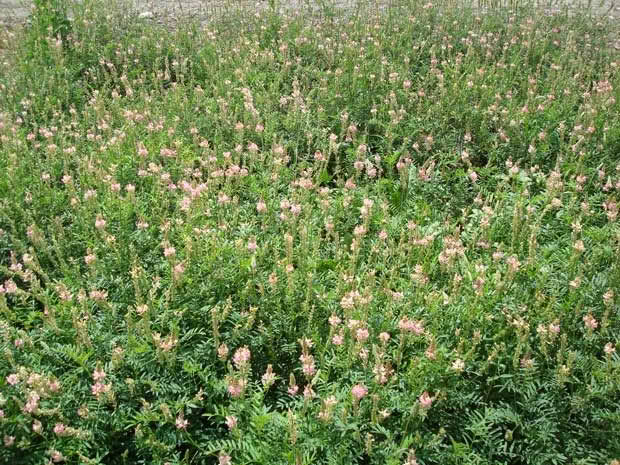
Sanfoin
WHY YOU MUST START THE FE FIGHT IN JANUARY
The key to keeping your stock safe is starting zinc treatments 3-4 weeks BEFORE spore counts start to rise, and for most parts of NZ affected, that’s in January. If you want to get specific, you can check your own property by taking pasture samples and getting a spore count done. It’s best to do this area by area or paddock by paddock.
Talk to your vet as there is also a risk in starting zinc treatment too early, leaving animals at risk of zinc toxicity if it is fed for more than 100 or so days. Usually the timing is to start in early to mid-January so the last zinc treatments are still effective in April (90 days).
You can find out the average FE spore counts in your area by checking weekly reports online:
https://www.gribblesvets.co.nz/facial-eczema-reports/
SIGNS OF FE YOU MAY SEE (BUT MOSTLY YOU WON’T)
The problem with FE is that by the time you see physical signs of the illness in your livestock – the last step in the disease process – most of the damage is already done. The majority of affected stock won’t show visible symptoms at all.
This is known as subclinical FE: the animal is suffering from liver damage caused by FE but there are no symptoms visible to the naked eye – a blood test would be required. Once you can see symptoms, it’s known as clinical FE and severe liver damage has already occurred.
Visible symptoms of clinical FE in livestock include:
• sudden death
• restlessness
• shaking and rubbing heads against posts and gates
• avoiding direct sunlight
• drooping and reddened ears
• swollen eyes
• eyes and exposed areas develop weeping, scabby skin which may become infected or fly blown.
Death rates and animal stress caused by subclinical and clinical FE can be high. In some areas during bad years, farmers can lose up to 70% of their hoggets, and a loss of 20% of lambs is common.
Even if an animal does recover, it may then suffer from a lowered immune system, increasing its susceptibility to other diseases, and it will have a poor reaction to stresses such as pregnancy, lambing, etc.
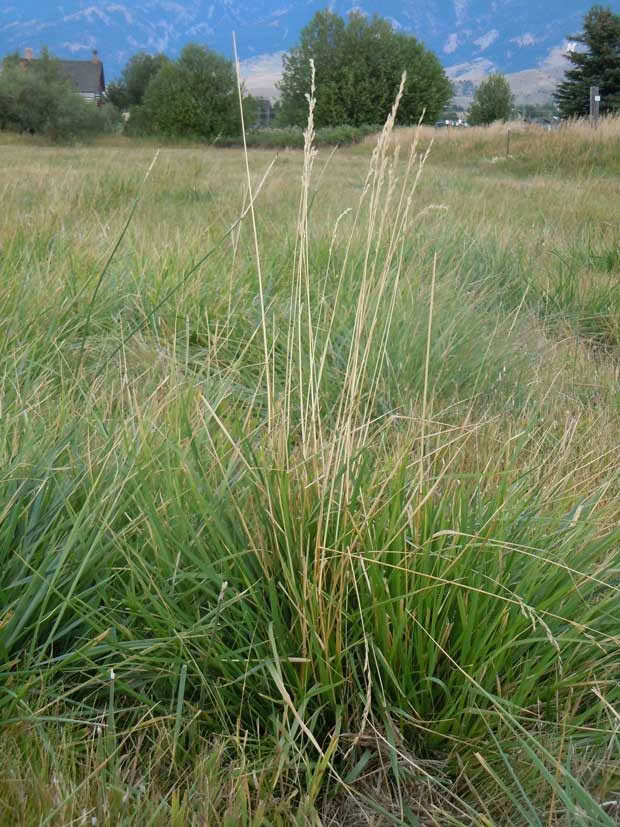
Cocksfoot
10 THINGS YOU NEED TO KNOW ABOUT FACIAL ECZEMA (FE)
1. FE is a serious, potentially deadly disease that affects sheep, cattle, alpaca and llamas, goats and deer. It is caused by the spores of a fungus, Pithomyces chartarum, which lives at the base of pasture plants. Once swallowed, the spores release a toxin which can cause severe injury to the liver and bile ducts. In some animals the bile ducts may become partly or completely blocked, causing bile and other waste products to build up in the bloodstream, making animals sensitive to light.
2. The fungus grows best when humidity is high (close to 100%) and the temperature at soil level is above 12°C for a period of a few days. For most of the North Island and the top of the South Island, the danger months are January to as late as May.
3. Your losses will always be much greater than they appear. Even when no symptoms of FE are visible on an animal’s body, the damage internally can reduce their lifetime productivity by up to 25%. For example, you may only see a few sheep with the symptoms of FE but later in the year you have a barren ewe problem, deaths at lambing, ewes that run dry before weaning, or other issues that you don’t connect with FE. For every clinical (or obvious) case, there can be five, 10 or more with the disease.
4. There are practical ways in which you can reduce your losses. You should use two or three methods together, such as breeding with FE-tolerant sires, pasture management, and zinc treatments.
5. Breeding for increased tolerance to FE should be your first line of defence. Buying FE-tolerant rams will make a great difference in only a few years, but you have to be consistent in only bringing tolerant rams into your flock.
6. You can give all or part of your sheep flock or cattle herd a zinc bolus (Time Capsule), which lasts six weeks, or drench with zinc oxide weekly or fortnightly to reduce liver damage. Large farming operations will spray zinc on pasture.
7. Quit stock early, build up feed reserves, and aim for light rotational grazing over summer and early autumn.
8. Most vet clinics have a spore counting service. Doing regular spore counts will help you identify the safer parts of your block, usually shady, windy places.
9. Aim to be lightly stocked through the danger period.
10. Don’t relax precautions too soon in autumn – a few cool nights or heavy rain doesn’t mean the danger has passed. Once spore counts rise, pastures remain toxic until the spores disappear as the temperature and humidity drop later in autumn.
THE HIDDEN COSTS OF FE
Sheep on a Gisborne farm and at a Whatawhata research station were affected by what appeared to be only minor FE outbreaks. But despite there being only two or three clinical cases among the Gisborne ewes, blood tests revealed that two-thirds of the ewes had liver damage, and scanning showed that among those affected, there were more barren ewes and far fewer twins. The more severely affected ewes had only half the number of lambs as those unaffected.
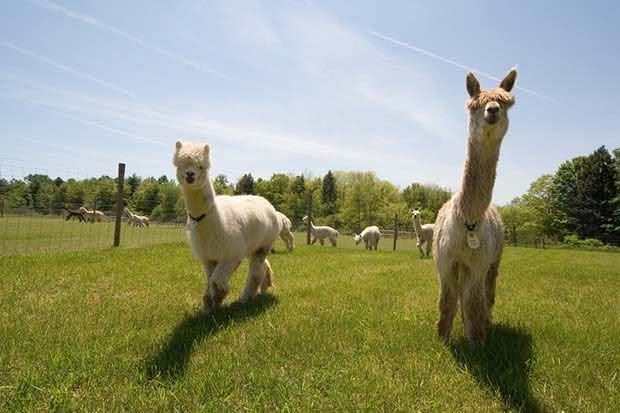
Image: Fairy828 | Dreamstime.com
Worse still, the Whatawhata trial showed that the ill effects carried through the life of the ewe. The productivity of the ewe hoggets affected by FE was recorded until they were culled for age. Among those affected by FE, there was a higher death rate and lower lambing percentage over the next four years.
Source: AgResearch, Ruakura
WHY ALPACAS ARE MOST AT RISK OF FE
Alpaca are one of the most sensitive animal species to FE – more sensitive than sheep, cattle, deer and goats. Unfortunately, the first symptom of the disease in many alpaca is sudden death. Alpaca are reasonably stoic animals and often do not show the subtle early signs that other species do until the liver damage is very severe. Even if they live, animals that show no symptoms may still be affected with severe liver damage.
There are also issues in preventing FE that alpaca owners need to be aware of. The required level of zinc for protection from FE is 2g elemental zinc per 100kg liveweight per day.
Zinc sulphate: this is added to water troughs for cattle, but isn’t an effective method for alpaca which only drink small amounts of water at irregular times, and they are also put off by the bitter taste.
Zinc oxide: this comes in two forms for use in animals, either powdered or as a bullet (called a Time Capsule). Time Capsules do not appear to be of any use in alpaca in their present formulation as the outside coating is broken down very rapidly by alpaca, resulting in very rapid absorption of the zinc but a very short duration of effect. Zinc oxide powder can be made up into a drench, but this is difficult to administer and has to be repeated every 3-4 days to be effective. The easiest way is to feed zinc oxide pellets or alpaca nuts with added zinc, or to add zinc oxide powder to feed, along with molasses to disguise its bitter taste.
Read more at NZ Alpaca Association
Love this story? Subscribe now!
 This article first appeared in NZ Lifestyle Block Magazine.
This article first appeared in NZ Lifestyle Block Magazine.
